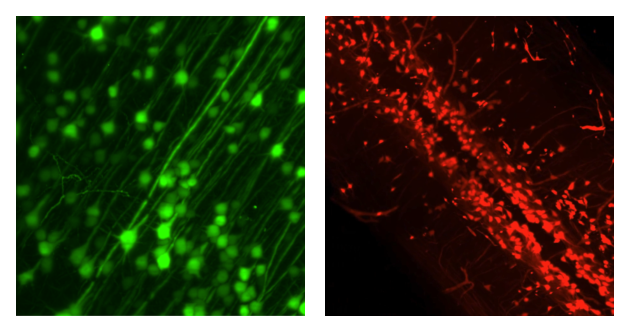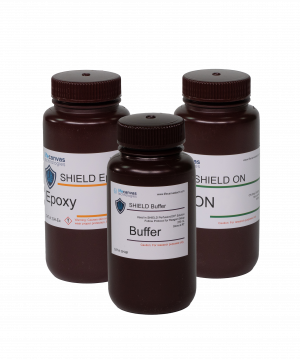Here, we demonstrate how the Megatome Premium can easily facilitate this process through whole-mount and non-destructive tissue sectioning.
Published by Park et al. in Nature Biotechnology 2018, our SHIELD reagent (AKA GE38) safeguards endogenous fluorescence, protein antigenicity, nucleic acids, and overall tissue architecture against physical and chemical stressors. The SHIELD tissue preservation method also protects tissue during fluorescent protein imaging and antibody labeling across multiple rounds.
Compatible with:

Our streamlined protocol takes just 4-6 days, without the variability of tissue embedding via hydrogel or paraffin. Reagents are non-toxic and can be easily disposed of after use.

250 mL: Preserves 25 whole mouse brains or comparably sized samples.
500 mL: Preserves 50 whole mouse brains or comparably sized samples.

Lindsay L. Ejoh, Raquel Adaia Sandoval Ortega, Jacqueline W. K. Wu, Alaa Elhiraika, Malaika Mahmood, Kyungdong Kim, Emmy Li, Oliver Joseph, Lisa M. Wooldridge, Jessica A. Wojick, Gregory J. Salimando, Gregory Corder
Zuri A Sullivan, Bertrand J. Wong, Vikrant Kapoor, Paula Kathleen Vincze, Harris S. Kaplan, Pia Giraudet, Brianna R. Watson, Adel Misherghi, Sebastian Lourido, Jeffrey R Moffitt, Catherine Dulac
Quan Jiang, Ling-Xiao Shao, Shenqin Yao, Neil K. Savalia, Amelia D. Gilbert, Pasha A. Davoudian, Jack D. Nothnagel, Guilian Tian5, Tin Shing Hung, Hei Ming Lai, Kevin T. Beier, Hongkui Zeng, Alex C. Kwan
Here, we demonstrate how the Megatome Premium can easily facilitate this process through whole-mount and non-destructive tissue sectioning.
Immunohistochemistry (IHC) and 3D histology are different approaches to detecting specific proteins in biological tissue.
The SHIELD kit provides optimal tissue preservation by stabilizing molecular features & tissue architecture with flexible epoxide bonds.
Without SHIELD preservation, many tissue clearing techniques can lead to significant sample degradation and loss of biomolecular information.